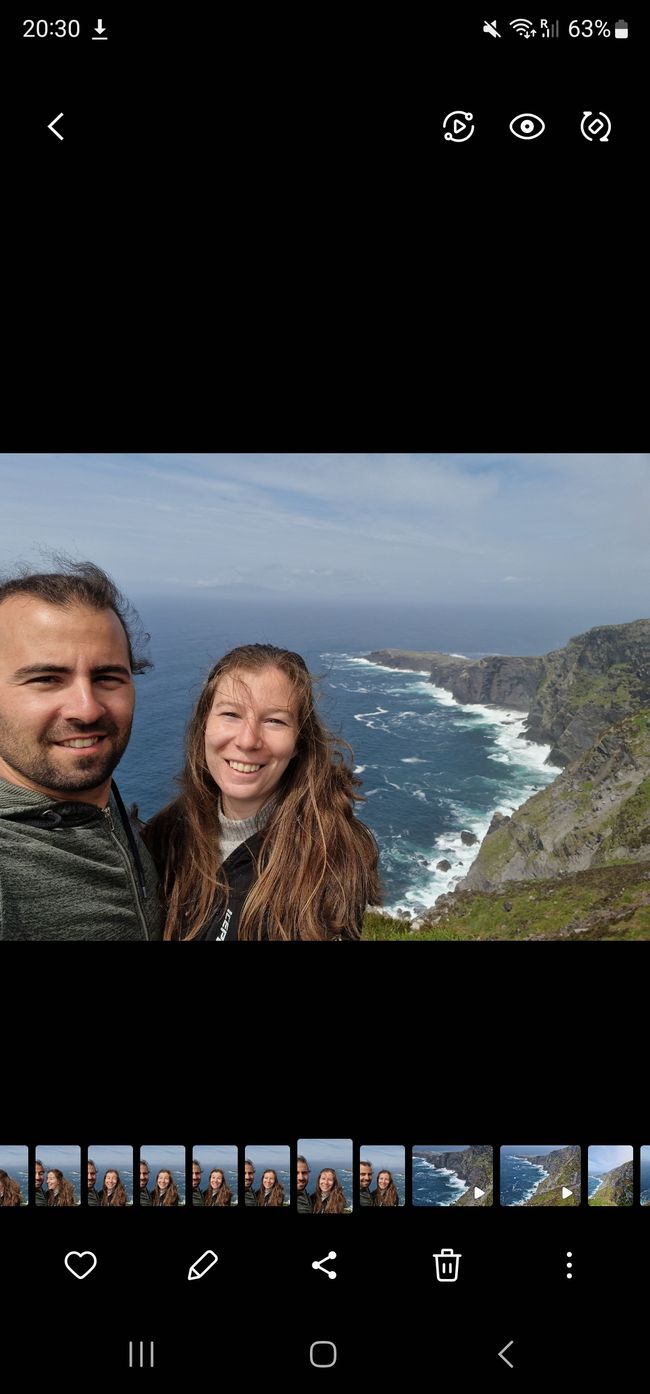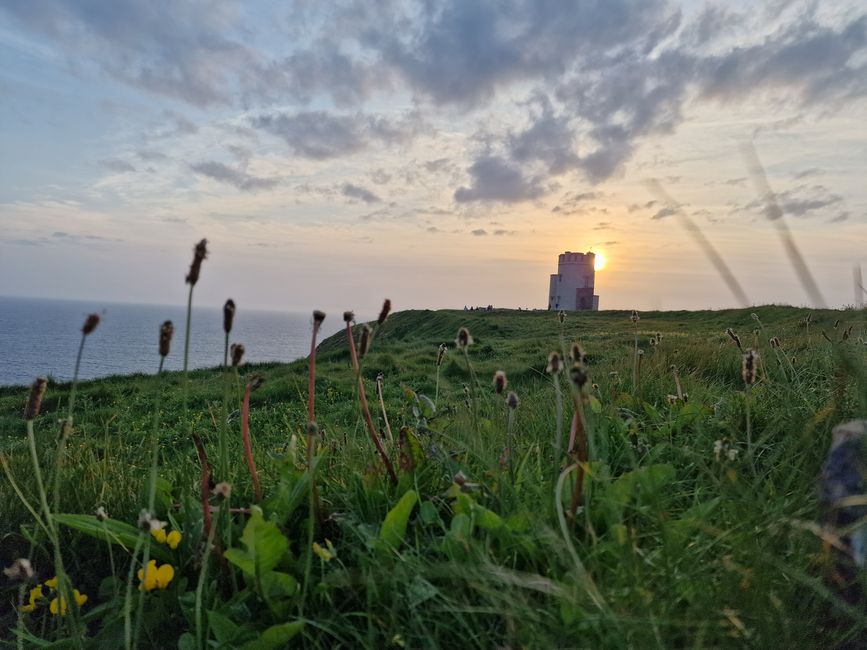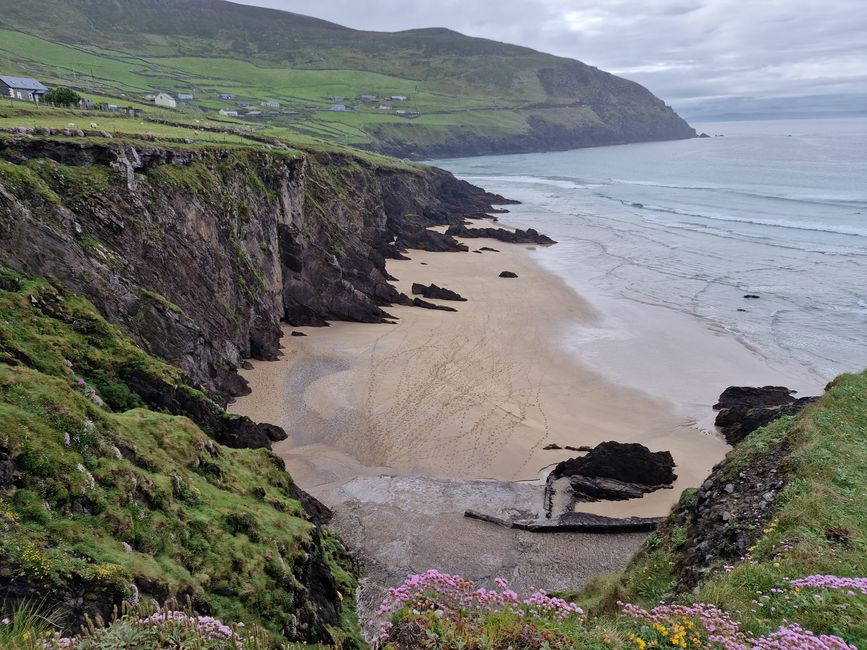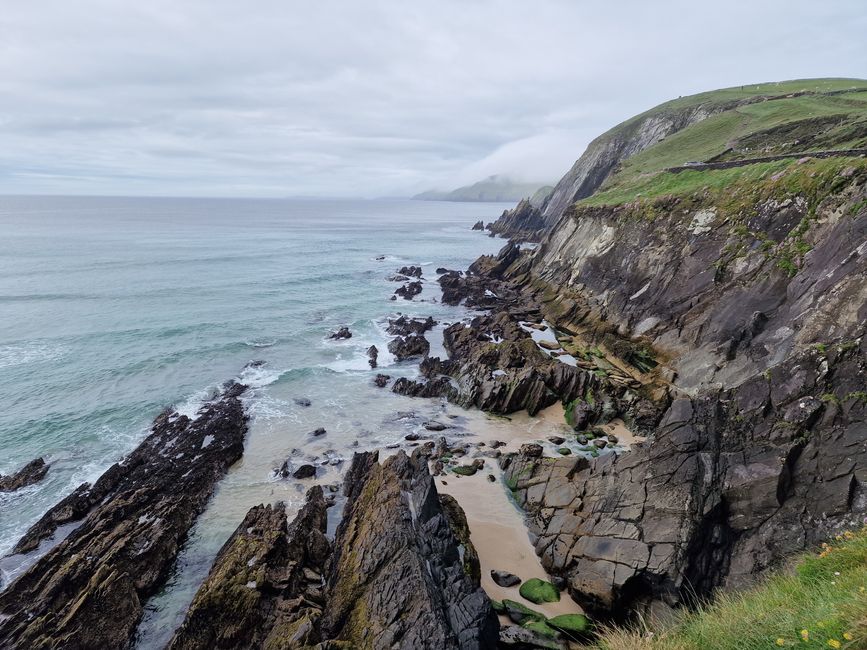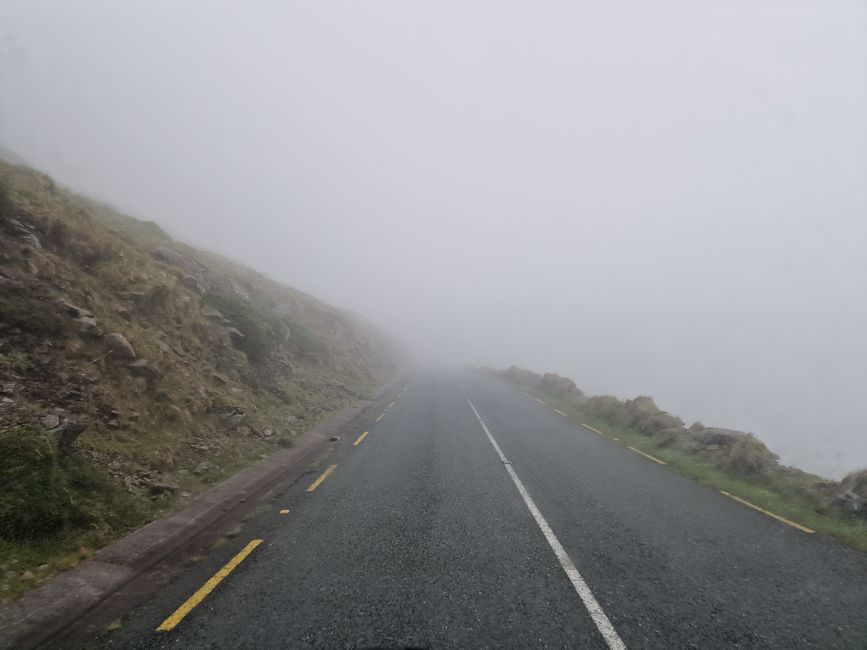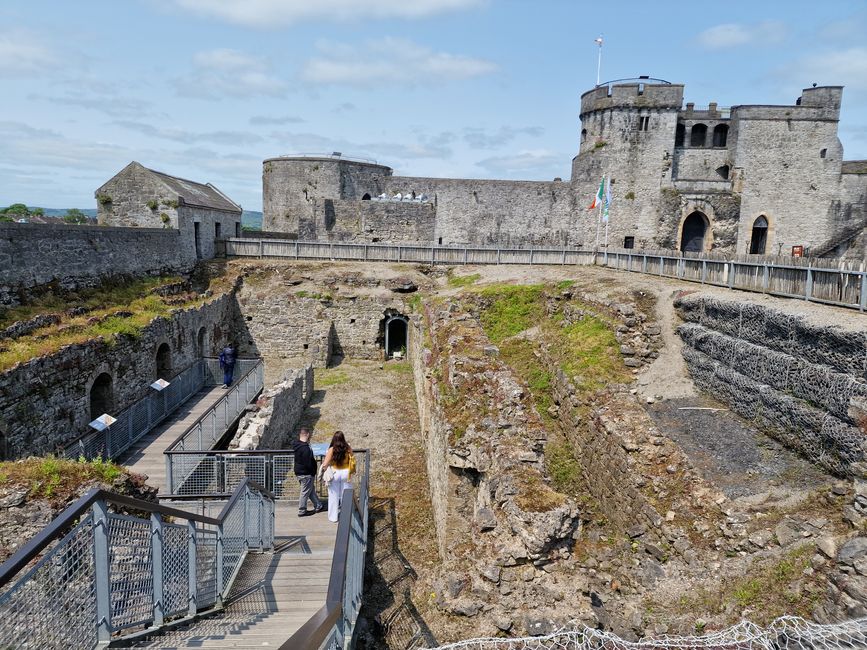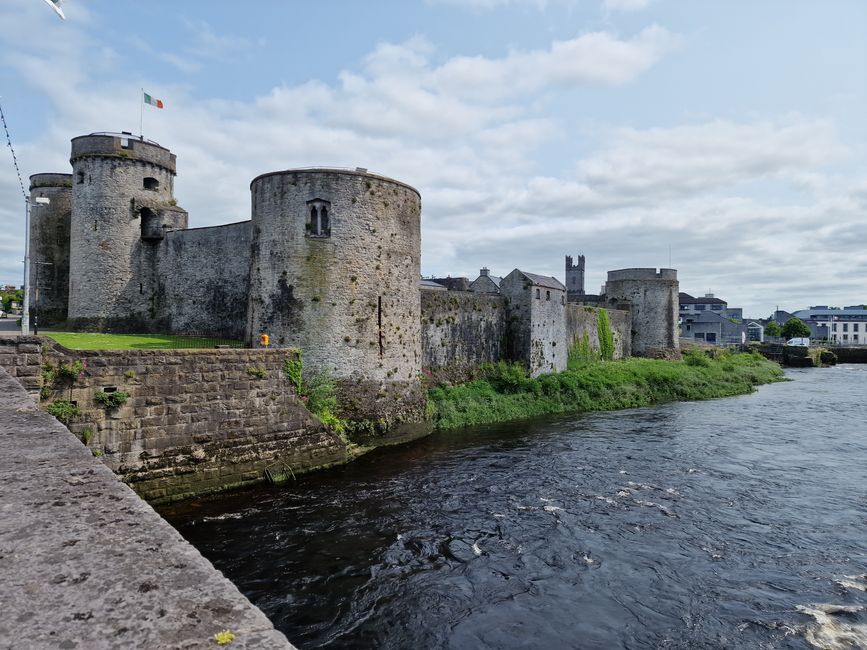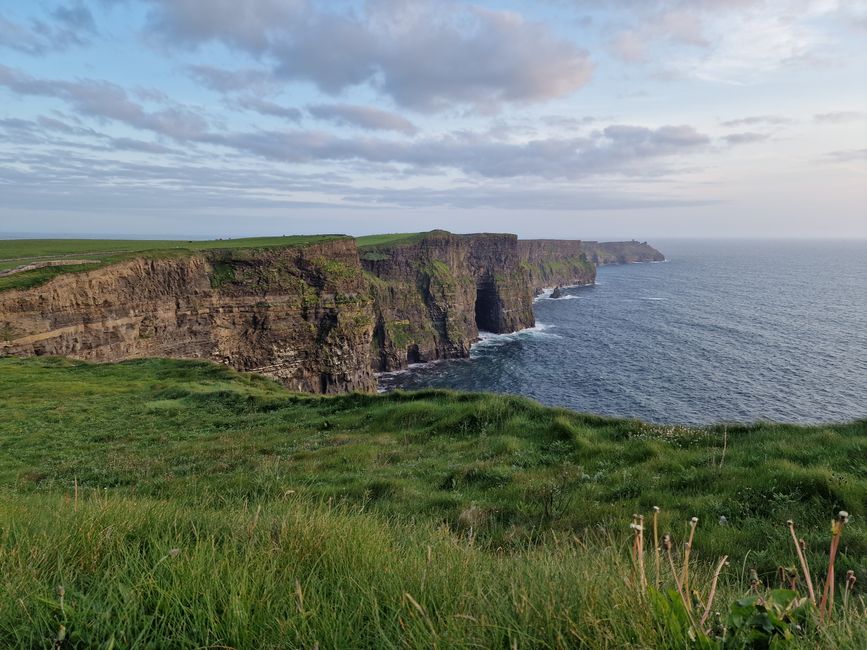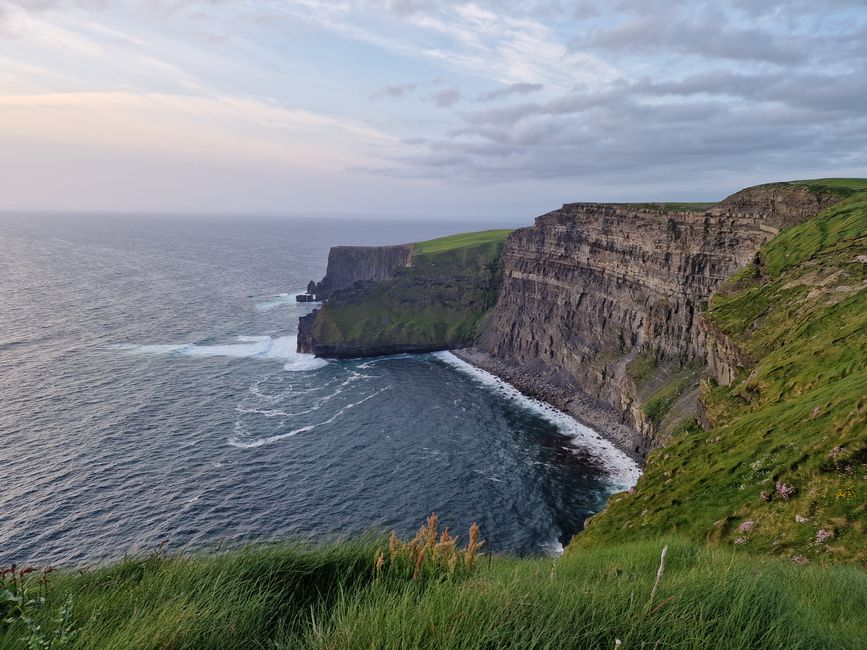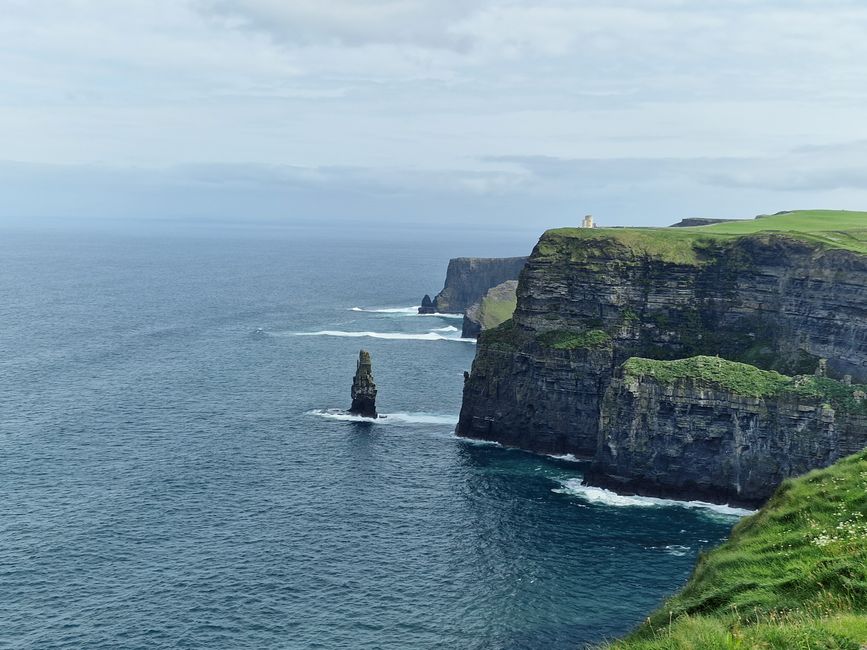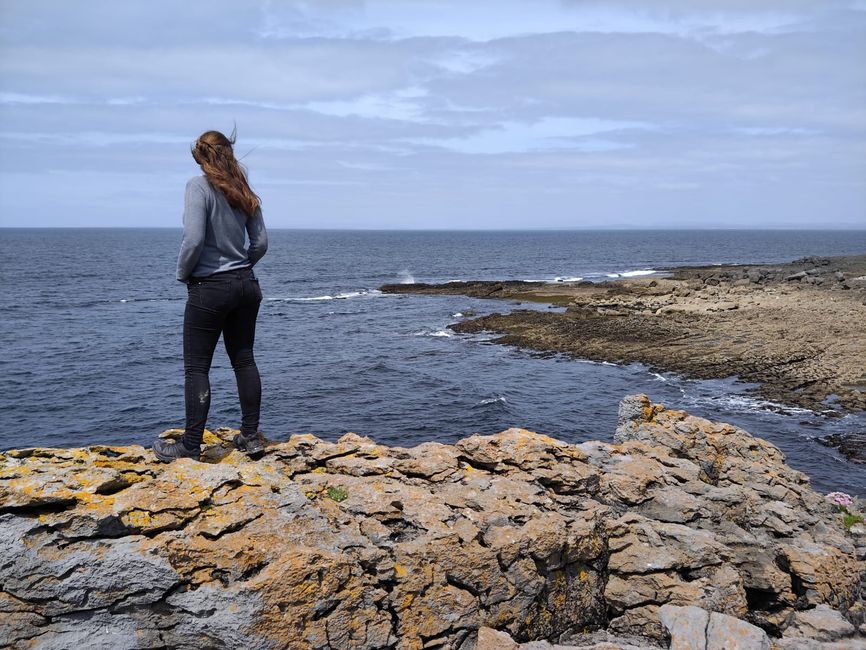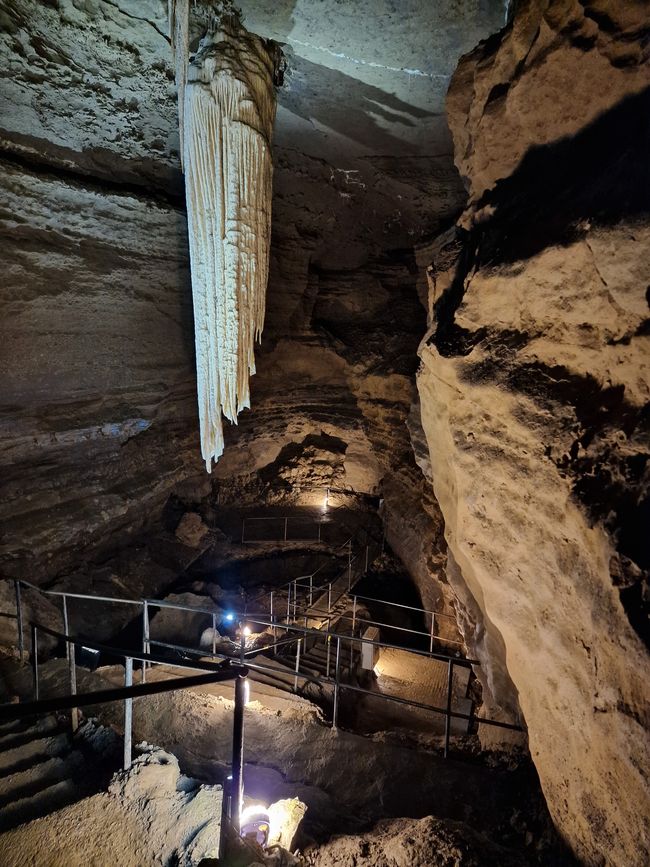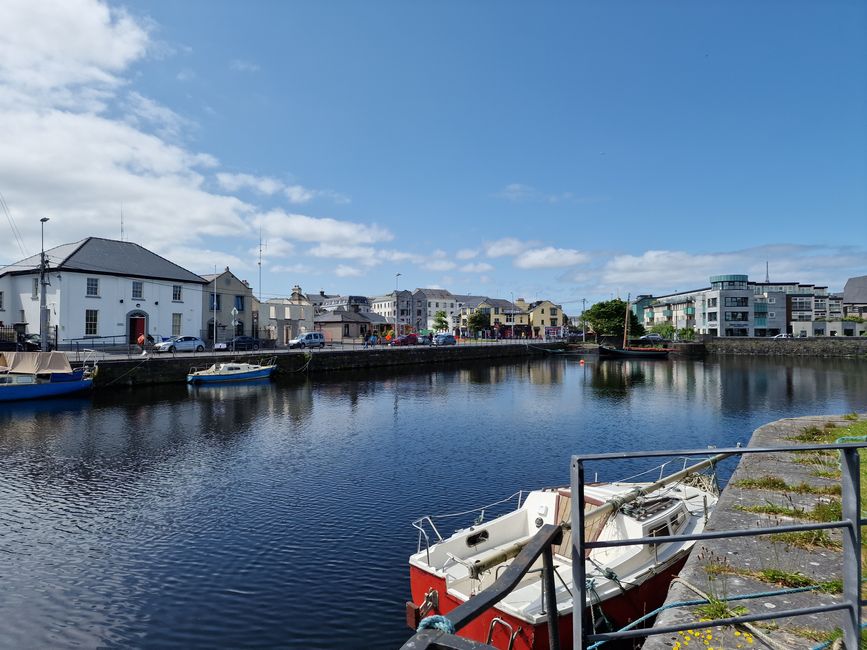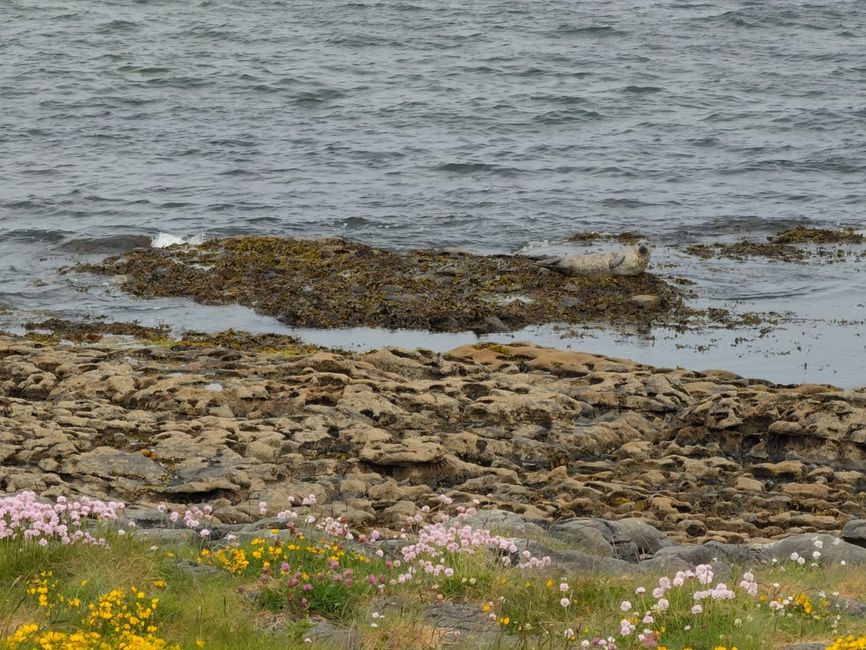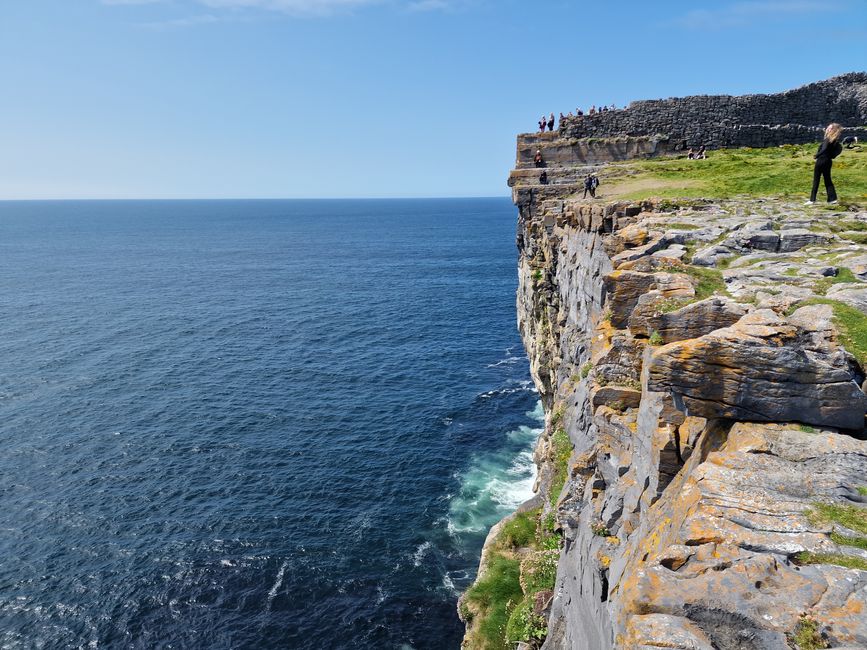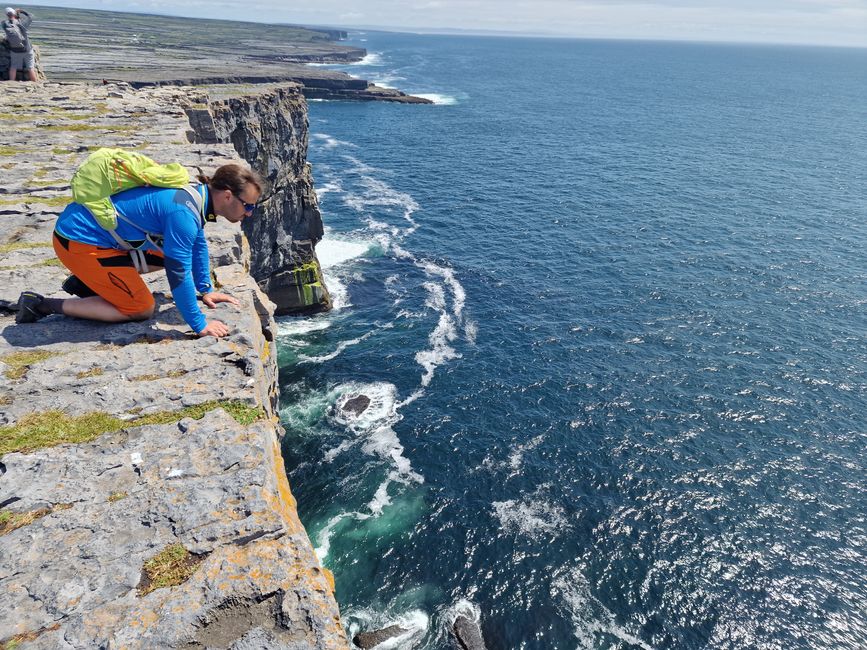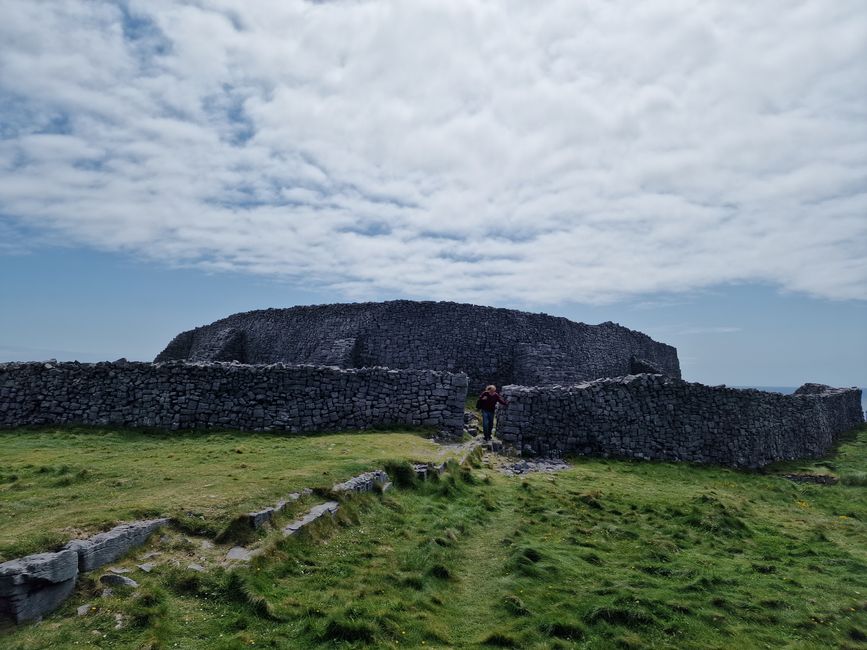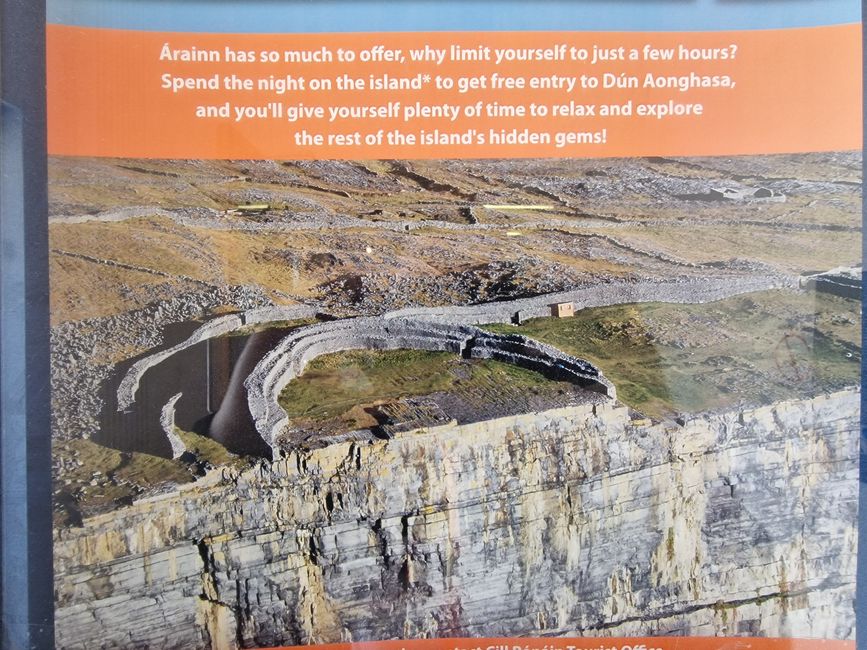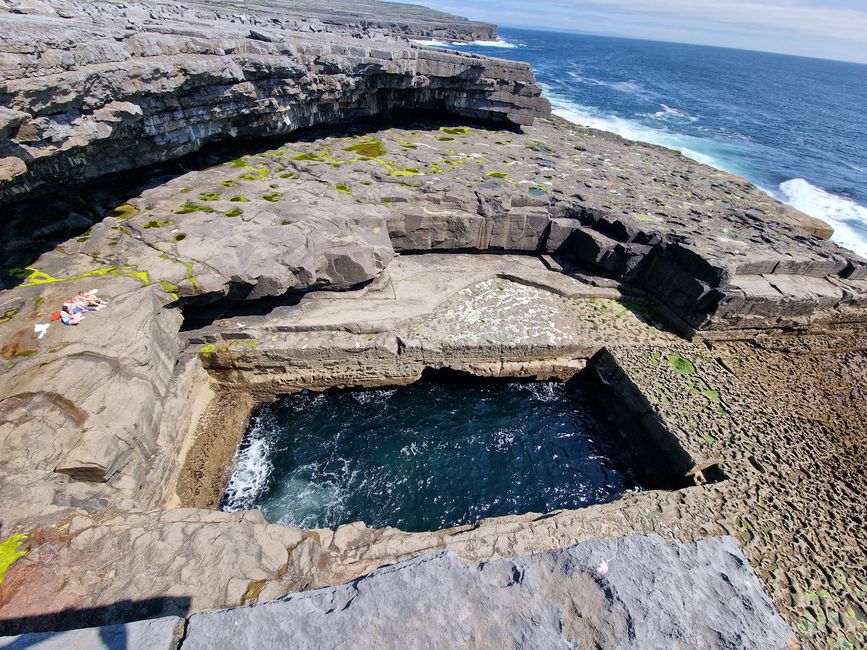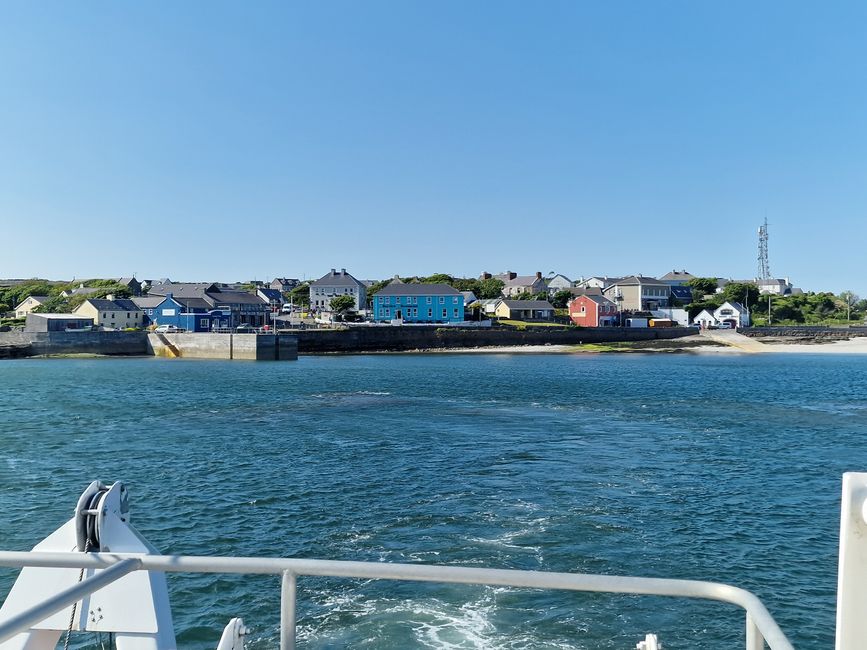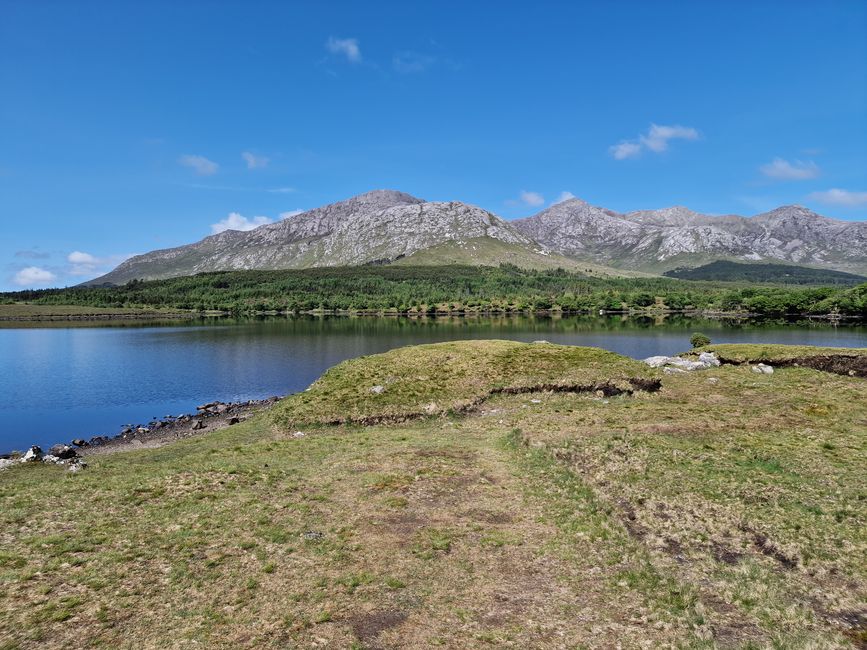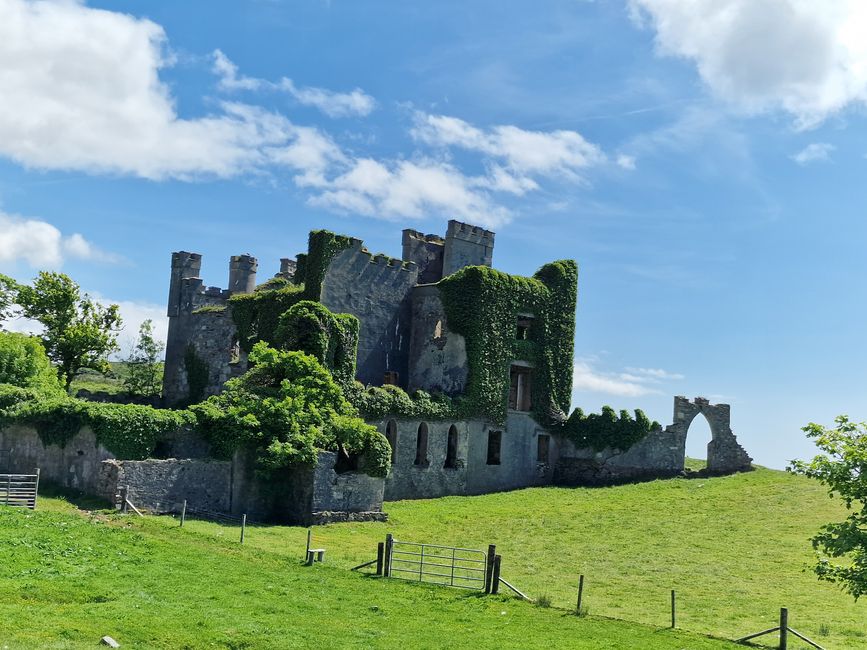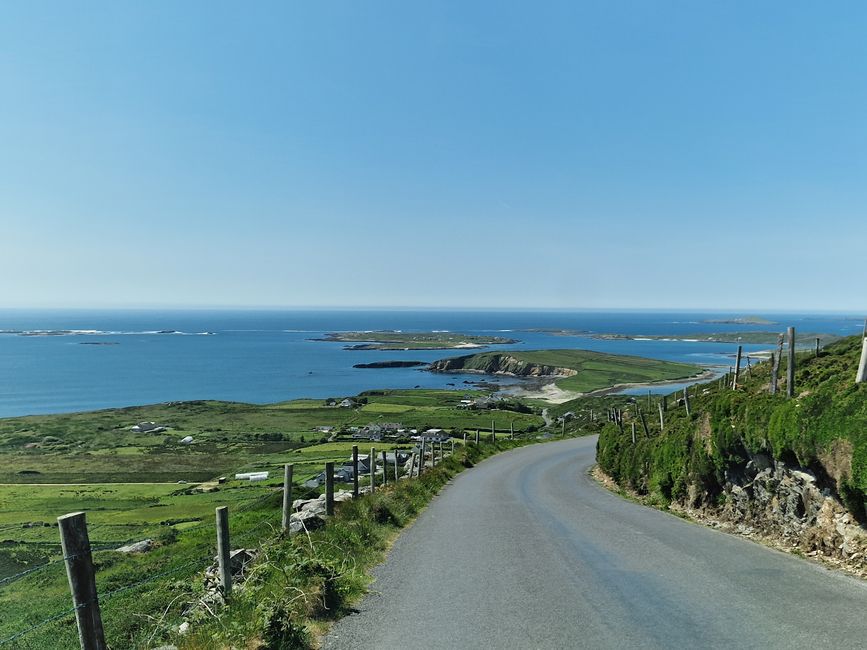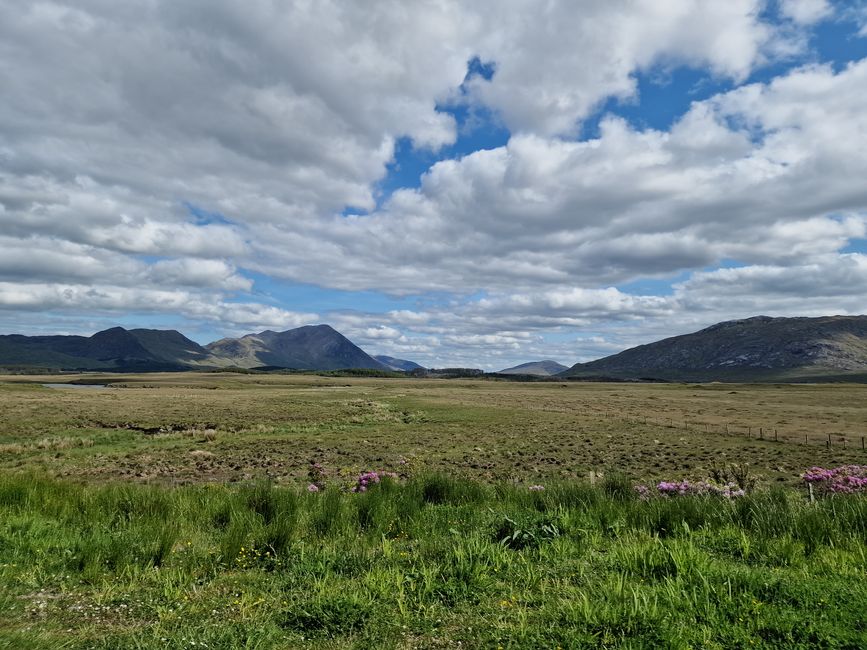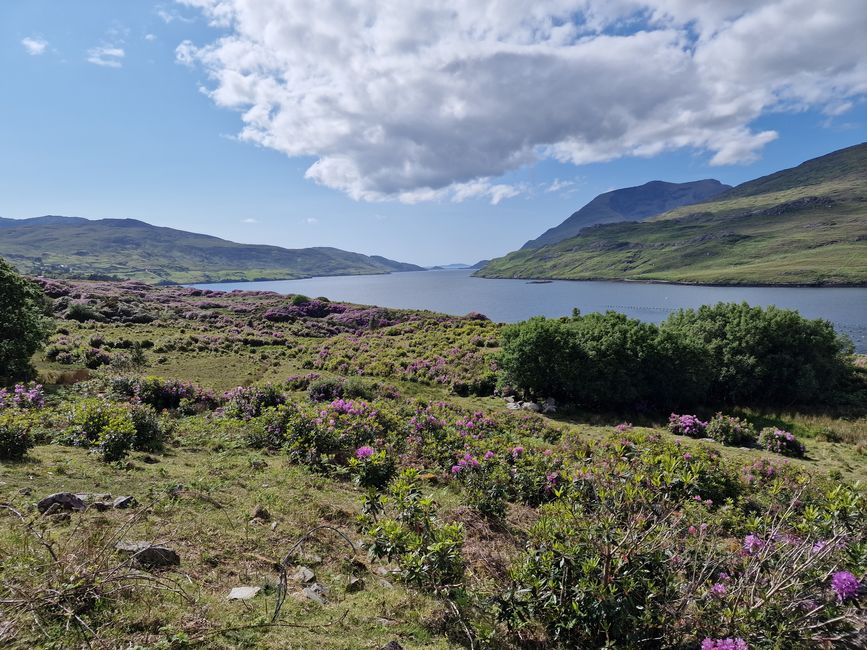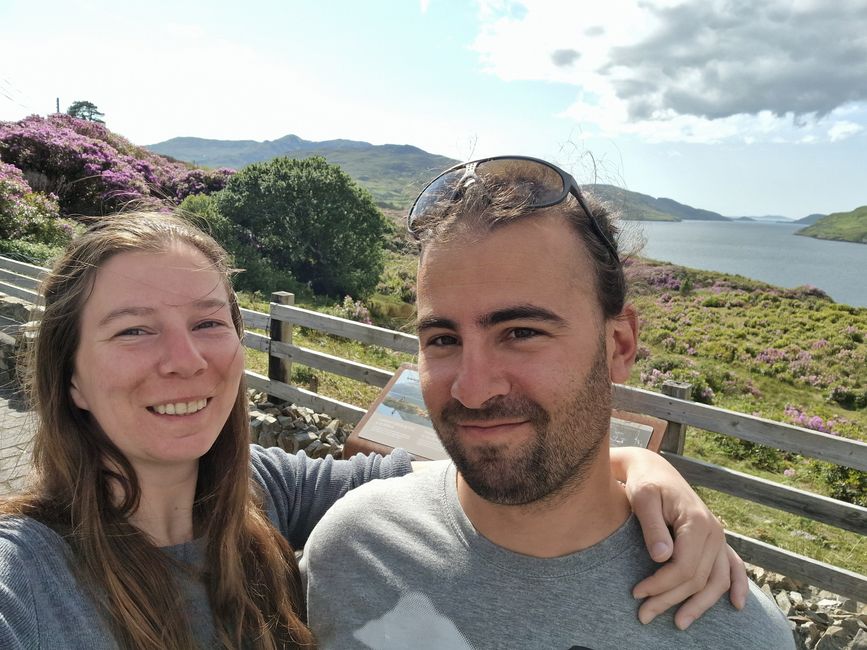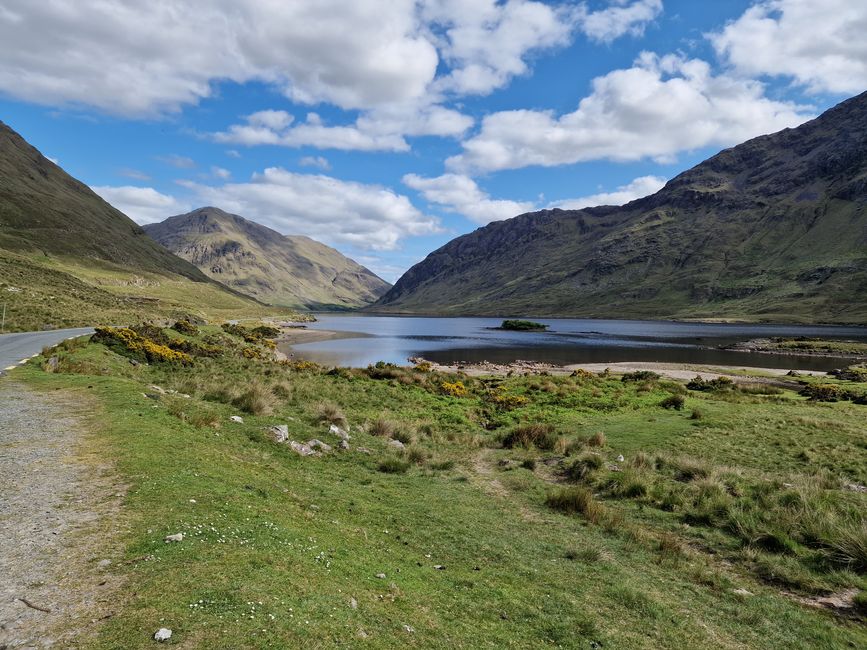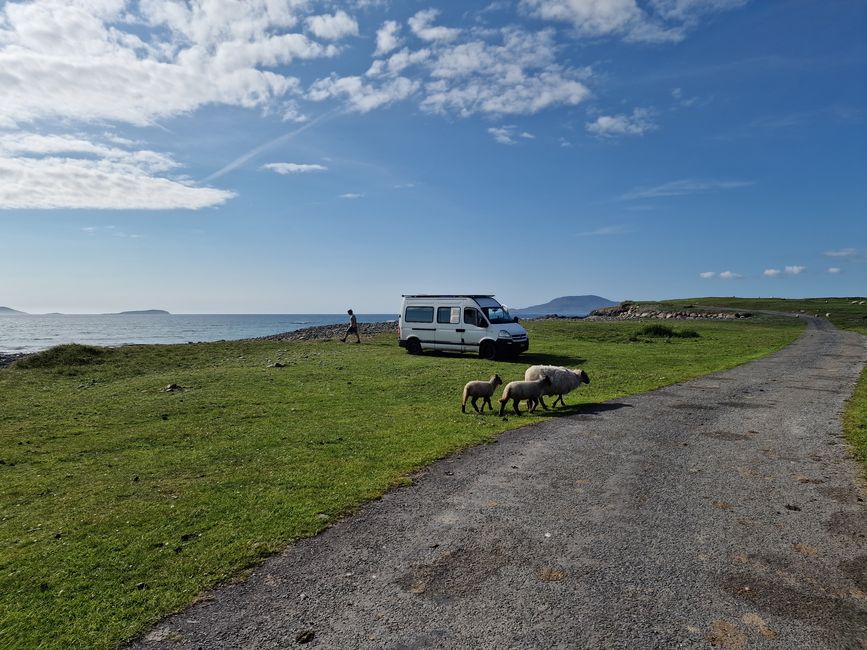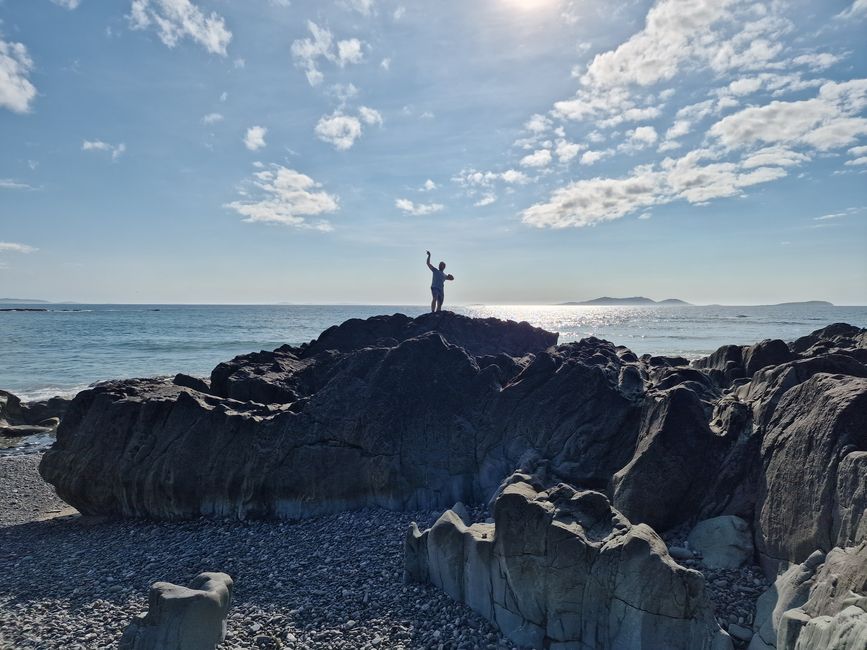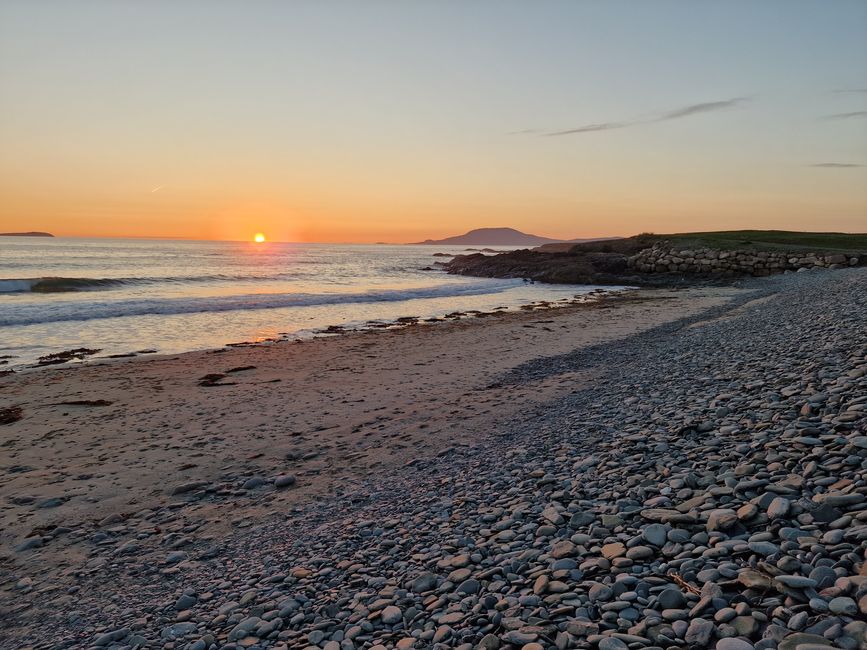Westcoast
Publicados: 26.05.2023
Assine o boletim informativo
Short:
On Sunday, we wanted to drive along the Dingle Peninsula. Our first stop was Coumeenoole Beach, right next to Dunmore Head, the most westerly point of Ireland. By the way, it was also the shooting location of a Star Wars movie.
After a loop we drove back to Dingle and after lunch across the notorious Conor Pass to the north. The Pass was a tough one, because for several hundred meters the road is so narrow that it is almost impossible to cross vehicles. Well, we got through it. Afterwards we went to a nice quiet camping in the middle of the woods near Limerick.
On Monday we visited King John's Castle in Limerick, a castle from the 13th century. The museum is very detailed and interesting, we definitely recommend a visit. Afterwards we walked a few streets of the city itself before continuing our route. We decided to spend the night directly in the visitor parking lot of the Cliffs of Moher. That same evening, after having cooked a nice dinner, we walked up to the cliffs. It was 8:30 p.m. and fortunately there were hardly any more people. We had one of the most visited tourist spots in Ireland almost to ourselves. We hoped for a nice sunset, but it was too cloudy for that. But still beautiful.
On Tuesday we got up at 7:00 a.m. because we wanted to go to the cliffs again in the hope that there would still not be too many people in the morning. First, we looked at the exhibition in the visitor centre, then we walked up to the cliffs. There we also met a guide who showed us the puffins (you remember, the cute birds) through binoculars. Here too are 60'000 nests, but from many different birds. From the guide we also learned that there are a lot of whales and basking sharks to be seen from here. But we were not lucky that day despite the good weather.
In total, we spent about two and a half hours here, and after a coffee, we continued towards Burren. But first we stopped at Doolin Cave, about 15 minutes from the Cliffs. This cave was discovered by two young, reckless men in 1952, more by luck. They just walked along a creek, and where it disappeared under a rock, they started digging a hole, and they just kept crawling through it. And two and a half hours later, they were standing in a huge chamber, and they discovered the largest stalactite in the northern hemisphere and third largest in the world. And of course, we wanted to have a look at that. And it's actually a huge piece. Experts estimate it to be around 10 tons at a length of 7.3 meters. And since its discovery 70 years ago, the stalactite has grown by a whopping 1 cm! So how long it has been hanging from the ceiling is hard to imagine, but it has been for a few thousand years.
After the visit we had a delicious lunch (pan-fried salmon) at the restaurant Monk's in Ballyvaughan and then we drove to Galway to Una and Jim. There we stayed two nights.
On Wednesday we drove to the town with Una. It's quite convenient to have a local tour guide for yourself. We can't tell you much about Galway itself, history and detailed, but it's best to put the place on your visit list and see it for yourself. It's a really nice little town, but very alive.
On Thursday we had to say goodbye again. On that day we wanted to go to Inishmore, the largest island of the Aran Islands. We had to drive almost an hour to get to Rossaveel, from where the ferry departs. And today we wanted to use our bicycles again. The journey to the island takes about 30 minutes. Once there, it was already teeming with many day tourists, almost all of whom rented a bicycle. Luckily, we had our own, so we could just go straight away. Our first stop was a small beach, from where you could see the colony of sea lions. We discovered two of them. Then we went to the other side of the island, to an ancient fort called Dún Aonghasa. The inner ring was probably built already 3000 years BC. Besides, it is located right at the edge of the cliff. Especially with the bicycle shoes, we had to be careful not to go too far forward, because the cliffs here drop a few meters steeply, logically. But who knows what it looked like here 5,000 years ago.
After that, we went to the Wormhole, a natural, rectangular pool of water inside a rock formation right on the coast. A very impressive view. It was also the site of a Red Bull Cliff Diving competition a few years ago. Frankly, we wouldn't dare.
Now it was time to go back to the harbour. In the main town of Kilronan we refreshed ourselves with coffee and ice cream and got some locally made chocolate fudge. The return trip was fun. The weather was still very nice, the wind caused some waves and the ship rocked back and forth. Sometimes the water splashed over the railing and the people standing there got wet. Back on the mainland we drove about 20 minutes north and found a small spot next to the road, right by a river. Only another English camper stood there and we enjoyed the last rays of sunshine in peace.
Today the alarm clock didn't stand a chance against us. For us a little late (it was 09:00 am) we got up and got ready for our drive through Connemara, a beautiful wild region in the west. The scenery was definitely different from what we've seen so far. There were many mountains and lakes here, the roads were much more open, but not nicer to drive. On one hand it was fun to drive these bumpy roads, on the other it is not advisable to drink during this time. It also had much less bushes everywhere, and especially less traffic and fewer people. After all the tourist attractions it was good to be a bit off. First, we drove past the two lakes Derryclare Lough and Lough Inagh, then again west towards the coast. We had our lunch in Clifden, from where we drove back over another road and then continued northwards. This road led us to Killary Fjord, one of three fjords in Ireland. Because we are tourists too, we stopped at a viewpoint and marveled at it. A little foretaste of what awaits us later in Norway. The fjord, by the way, is also the border between County Galway and County Mayo. Here, too, the landscape was more open and deserted, with mountains and lots of sheep on the road. We definitely enjoyed this ride.
We parked our bus right on the beach tonight. It's a really beautiful place, and we're the only ones far and wide.
Long:
On Sunday, we woke up to light rain. Today, as said, we wanted to go down the Dingle Peninsula. Our first stop was Coumeenoole Beach, right next to Dunmore Head, the most westerly point of Ireland. But we only learned that when we drove past it. Incidentally, it was also the shooting location of a Star Wars movie. This we also only found out on the spot, we are neither Star Wars fans nor has Sarah ever seen a movie of it.
After a loop, we drove back to Dingle, had lunch there, and then continued north, over the Conor Pass. The first thing we saw were warning signs. No RVs, no more than two tons and no more than six feet wide. Sarah, the born scaredy cat, would have turned around. But Luke's action vein made us continue. The Conor Pass is famous for being very narrow during a short stretch, we even read about an overhanging passage on the Internet, but we didn't notice it. Funnily enough, the Conor Pass was completely hidden in the fog while we were walking in the warm sunshine in Dingle. So, we couldn't see what was coming at us. And then the bottleneck got really interesting. But the main problem with this crossing of vehicles was that most drivers simply can't reverse. Imagine the chaos in high season when several vehicles have to reverse. Well, after a few hundred meters, we were through that. Afterwards we headed towards Limerick. We spent the night at a campsite in the middle of the woods, about 20 minutes from the city. It was beautifully quiet, the last raindrops dripping from the leaves and the birds chirping.
On Monday we visited King John's Castle in Limerick, a very well-preserved castle dating back to the 13th century. The history of this is as long as the journey home in traffic jams on the motorway. But the museum is very detailed and interesting and we definitely recommend a visit. After the visit we ran a few streets of the city itself, before we decided to continue our journey. We drove a short detour to Kilkee, made a pee break and then decided to spend the night in the visitor parking lot of the Cliffs of Moher. That same evening, after we had a nice dinner, we walked up to the cliffs. It was 8:30 p.m. and fortunately there were hardly any more tourists. We had one of the most visited tourist spots in Ireland almost to ourselves. We hoped for a nice sunset, but it was too cloudy for that. But still beautiful.
On Tuesday we got up at 07:00 o'clock, because we wanted to go to the cliffs again in the hope that there are still not too many people in the morning. First, we looked at the exhibition in the visitors centre, where we got a lot of information about the flora and fauna, the history of tourism (it started here at the beginning of the 19th century), geology and much more. Then we went out to the cliffs. The night before, we kept to the right, so this time we went to the left. That was a good idea, because that's where we met a Cliffs employee who was showing us the puffins through binoculars. You remember, the cute birds, which we could also see at Skellig-Michael Island. Here, too, there are 60'000 nests, but from many different birds. From the guide we also learned that there are a lot of whales and basking sharks to be seen from here. However, we were not lucky that day despite the good weather.
In total, we spent about two and a half hours here, and after a coffee, we continued towards Burren, a huge karst landscape. But first we stopped at Doolin Cave, about 15 minutes from the Cliffs. This cave was discovered by two young, reckless men in 1952, more by luck. They just walked along a creek, and where it disappeared under a rock, they started digging a hole, and they just kept crawling through it. And two and a half hours later, they were standing in a huge chamber, and they discovered the largest stalactite in the northern hemisphere and third largest in the world. And of course, we wanted to have a look at that. And it's actually a huge piece. Experts estimate it to be around 10 tons at a length of 7.3 meters. And since its discovery 70 years ago, the stalactite has grown by a whopping 1 cm! So how long it has been hanging from the ceiling is hard to imagine, but it has been for a few thousand years.
After the visit we had a delicious lunch (pan-fried salmon) at the restaurant Monk's in Ballyvaughan and then we drove to Galway to Una and Jim. There we stayed two nights.
On Wednesday we drove to the town with Una. It's quite convenient to have a local tour guide for yourself. We can't tell you much about Galway itself, history and detailed, but it's best to put the place on your visit list and see it for yourself. It's a really nice little town, but very alive.
On Thursday we had to say goodbye again. On that day we wanted to go to Inishmore, the largest island of the Aran Islands. We had to drive almost an hour to get to Rossaveel, from where the ferry departs. And today we wanted to use our bicycles again. The journey to the island takes about 30 minutes. Once there, it was already teeming with many day tourists, almost all of whom rented a bicycle. Luckily, we had our own, so we could just go straight away. Our first stop was a small beach, from where you could see the colony of sea lions. We discovered two of them. Then we went to the other side of the island, to an ancient fort called Dún Aonghasa. The inner ring was probably built already 3000 years BC. Besides, it is located right at the edge of the cliff. Especially with the bicycle shoes, we had to be careful not to go too far forward, because the cliffs here drop a few meters steeply, logically. But who knows what it looked like here 5,000 years ago.
After that, we went to the Wormhole, a natural, rectangular pool of water inside a rock formation right on the coast. A very impressive view. It was the site of a Red Bull Cliff Diving competition a few years ago. Frankly, we wouldn't dare.
Now it was time to go back to the harbour. In the main town of Kilronan we refreshed ourselves with coffee and ice cream and got some locally made chocolate fudge. The return trip was fun. The weather was still very nice, the wind caused some waves and the ship rocked back and forth. Sometimes the water splashed over the railing and the people standing there got wet. Back on the mainland we drove about 20 minutes north and found a small spot next to the road, right by a river. Only another English camper stood there and we enjoyed the last rays of sunshine in peace.
Today the alarm clock didn't stand a chance against us. For us a little late (it was 09:00 am) we got up and got ready for our drive through Connemara, a beautiful wild region in the west. The scenery was definitely different from what we've seen so far. There were many mountains and lakes here, the roads were much more open, but not nicer to drive. On one hand it was fun to drive these bumpy roads, on the other it is not advisable to drink during this time. It also had much less bushes everywhere, and especially less traffic and fewer people. After all the tourist attractions it was good to be a bit off. First, we drove past the two lakes Derryclare Lough and Lough Inagh, then again west towards the coast. We had our lunch in Clifden, from where we drove back over another road and then continued northwards. This road led us to Killary Fjord, one of three fjords in Ireland. Because we are tourists too, we stopped at a viewpoint and marveled at it. A little foretaste of what awaits us later in Norway. The fjord, by the way, is also the border between County Galway and County Mayo. Here, too, the landscape was more open and deserted, with mountains and lots of sheep on the road. We definitely enjoyed this ride.
We parked our bus right on the beach tonight. It's a really beautiful place, and we're the only ones far and wide.
Assine o boletim informativo
Responder (2)
Brigid
Did you see the Céide Fields?Sarah Lukas
Yesterday yes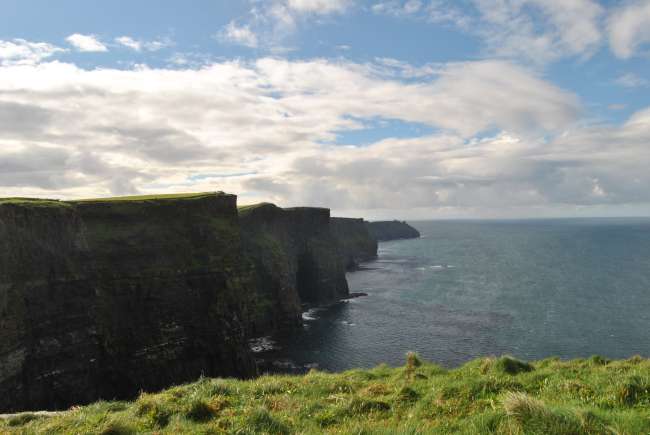
Relatórios de viagem Irlanda

